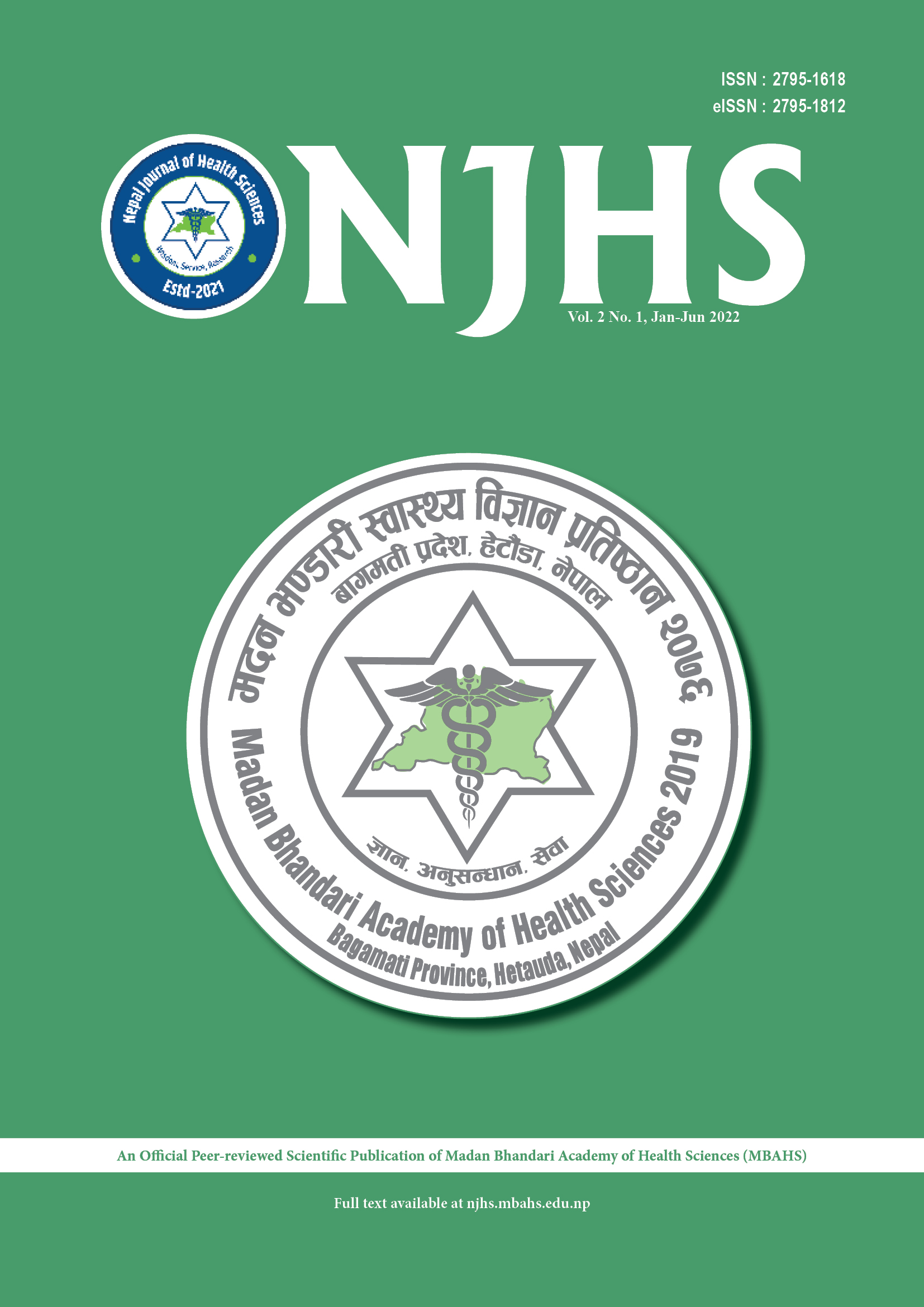The Study of Palmar and Digital Dermatoglyphics in Congenitally Deaf Patients
DOI:
https://doi.org/10.3126/njhs.v2i1.47164Keywords:
Congenital deaf, dermatoglyphics, pattern distributionAbstract
Introduction: Dermatoglyphics is the study of dermal ridges and patterns. It is frequently used for the diagnosis of several diseases in the human body including congenital deafness. Congenital deafness appears in children and is diagnosed through pathological tests, genetic investigations, or other anatomical measures.
Objective: To establish a potential relationship between Dermatoglyphics and identification of congenital deafness.
Methods: Forty congenital deaf male and female patients and forty normal control groups were selected. Observations of dermal patterns in the Hypothenar area and III and IV Interdigital areas of both left and right hands were carried out. Results were obtained for the normal control group as well as the congenital deaf patients’ group. Results obtained for both males and females were separately analyzed. Z-tests were conducted to assess the statistical significance of the results.
Results: Loop (Radical), Open Field, and Arches (Carpal) were present in higher frequencies in congenital deaf patients compared to the normal control group. The frequency of arches in the Hypothenar area in both hands of congenital deaf patients is found to be significantly higher than in the normal control group. Pattern frequencies in III and IV Interdigital areas are consistently higher in congenital deaf patients than in the normal control group. Observation of overall pattern frequencies in III and IV Interdigital area of males and females of both control group and congenital deaf patients exhibit higher frequencies in congenital deaf patients’ group.
Conclusions: Dermatoglyphics can be used for the diagnosis of congenital deafness.





